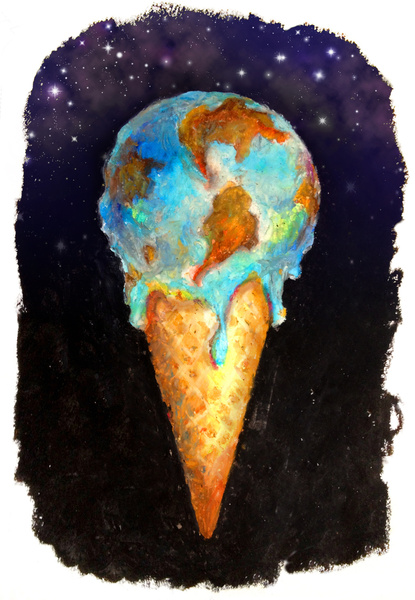 Sunshine and windy again this afternoon on California’s north coast — still no rain in sight.
Sunshine and windy again this afternoon on California’s north coast — still no rain in sight.
Amazing how much scientific research is conducted on just about every element of our planet’s environment — this morning a report again confirming our planet is indeed getting warmer, especially the air closest to the ground.
Via Reporting Climate Science:
UNSW researchers have confirmed strong warming in the upper levels of the lowest layer of the earth’s atmosphere, the troposhere, which has been long predicted as part of global warming theory and in global climate models.
In actuality, according to the study, temperatures in that troposphere are heating-up faster than a reading down here on the dirt — science which I don’t understand, other than it’s fairly disturbing in the rapidity of climate change.
(Illustration found here).
All this new research does is okay all the past research — and substantiate the notion we’re up shit creek without a paddle.
From today’s Guardian:
Embedded in this research is a conclusion about the so-called “tropospheric hot spot.”
This “hot spot” refers to expectations that as global warming progresses, the troposphere will warm faster than the Earth surface.
The hot spot is really hard to detect; it requires high quality measurements at both the surface and throughout the troposphere.
Past studies which could not detect a hot spot were often used by climate contrarians to call into question our simulation models and even our basic understanding of the atmosphere.
But this new study finds a clear signal of the hotspot.
In fact, the temperature in the troposphere is rising roughly 80 percent faster than the temperature at the Earth’s surface (within the tropics region).
This finding agrees very well with climate models which predicted a 64 percent difference.
Another brick in the wall…an end conclusion to that heated “tropospheric hot spot,” among other fiery factors, is the speedy melting of the Antarctic’s humongous ice shelves, which form where a glacier or ice flows down a coastline — an alphabet-laced catastrophe.
The A-B-Cs from Climate Central on Wednesday:
January 1995 marked a seminal moment in modern Antarctic history, with the crumbling of the Larsen A ice shelf, a floating plain of ice fed by glaciers on the Antarctic Peninsula.
Less than a decade later, its southern neighbor, the Larsen B ice shelf, disintegrated, stunning polar scientists.
After the spectacular collapses of Larsen A and B, scientists began keeping a close watch on the next ice shelf to the south, the Larsen C, which has shown some worrying signs of thinning.
At about the area of Scotland, it is five times larger than the Larsen B (itself five times as large as the Larsen A), “so when Larsen C goes, it’s going to be a really big event,” Paul Holland, a researcher with the British Antarctic Survey, said.
And apparently could be happening soon, as another ‘new’ study attests — from Scientific American, also on Wednesday:
If it melts, it could significantly raise global sea levels, said Paul Holland, the lead author of the study and a scientist with the British Antarctic Survey.
“If [Larsen C] collapses, this will cause several centimeters of sea-level rise, potentially within a few decades,” he said via email.
“We therefore need to understand and predict this risk.”
The study was published yesterday in the journal The Cryosphere, and joins a steady drumbeat of bad news from Antarctica.
A comprehensive study last month from the continent found that some shelves have thinned by as much as 18 percent in two decades
Ice shelf collapse is worrisome because the shelves are fingers of ice that stick out into the ocean and act as plugs trapping Antarctic glaciers on land.
In their absence, continental glaciers accelerate their slide into the sea.
For instance, glaciers that were behind the Larsen B are flowing eight times as quickly as they were before the ice shelf collapsed in 2002, studies have found (ClimateWire, March 27).
Interlocking coincidence of bad news — from this morning’s USAToday: ‘The last remaining section of Antarctica’s Larsen B ice shelf, which partially collapsed in 2002, is quickly weakening and likely to disintegrate completely by 2020, said a new study out today.’
Melting studies…